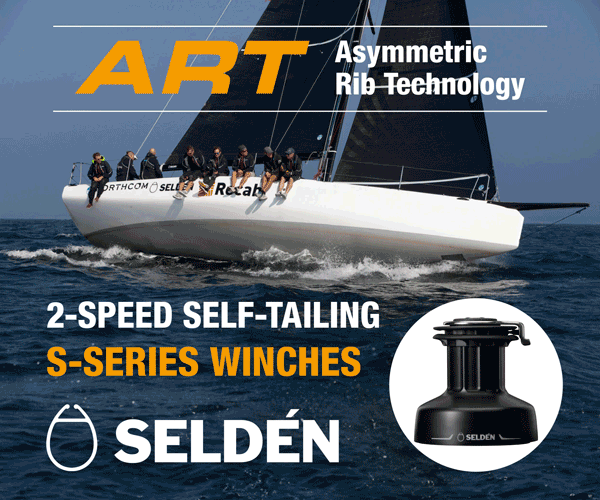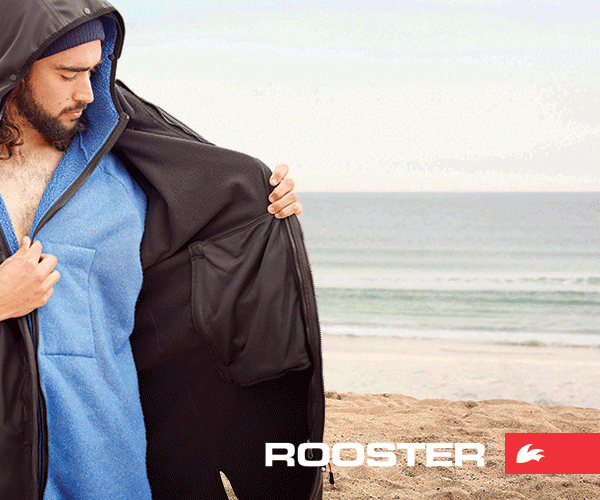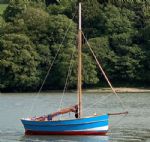-202403121604.gif)
-YandY-202303241230.gif)











| J24 (Sail No. 4239) Dartmouth |
 |
| Laser XD 203301 Upminster |
 |
| Laurent Giles 'Jolly Boat' Exeter |
 |
List classes of boat for sale |
Dehler 31 tuning and sailing |
Post Reply 
|
| Author | ||
captainkirk 
Newbie 
Joined: 11 Jun 07 Online Status: Offline Posts: 3 |
 Post Options Post Options
 Quote Quote  Reply Reply
 Topic: Dehler 31 tuning and sailing Topic: Dehler 31 tuning and sailingPosted: 11 Jun 07 at 6:36pm |
|
|
I'm not sure if this is the right place to asking this but I get the impression
this site has more readers that are into tuning and tweaking than others so here goes. We recently bought a Dehler 31 cruiser / racer, the boat is great but it has a strong tendancy to head up when sailing upwind. This is apparently a characteristic of the boat but I am sure that with the correct rig set up that the problem could be made a lot better if not overcome entirely. Any opinions on mast rake, bend, rig tension, sail twist etc, etc....would be greatly apprecitated. Add to that helming and sail setting techniques aswell. Edited by captainkirk |
||
 |
||
Stefan Lloyd 
Really should get out more 
Joined: 03 Aug 04 Online Status: Offline Posts: 1599 |
 Post Options Post Options
 Quote Quote  Reply Reply
 Posted: 12 Jun 07 at 6:36am Posted: 12 Jun 07 at 6:36am |
|
|
Too much rake? But the commonest reason for weather helm on keelboats is not keeping the boat flat enough. So: Not enough forestay tension (over-deep genoa)? Old baggy sails? Buy new ones. Too much sail area in too much wind? Not enough crew on the rail? Helm needs to feather slightly?
|
||
 |
||
WildWood 
Posting king 

Joined: 14 Nov 06 Location: United Kingdom Online Status: Offline Posts: 136 |
 Post Options Post Options
 Quote Quote  Reply Reply
 Posted: 12 Jun 07 at 10:57am Posted: 12 Jun 07 at 10:57am |
|
|
Poor balance in your sail plan could easily explain the boat luffing too much. The mainsail encourages a boat to luff while the head sail makes it bear away. Therefore too much mainsail power relative to the headsail power would make the boat luff. I think the Dehler 31 has a fractional rig and therefore probably has a big main compared to the head sail size. To sort the problem you should try either depowering the mainsail or getting more power from your head sail.
|
||
 |
||
Stefan Lloyd 
Really should get out more 
Joined: 03 Aug 04 Online Status: Offline Posts: 1599 |
 Post Options Post Options
 Quote Quote  Reply Reply
 Posted: 12 Jun 07 at 12:45pm Posted: 12 Jun 07 at 12:45pm |
|
|
That's more true of dinghies than keelboats. On a keelboat, the tendency to luff comes largely from excessive heel, especially on designs with fairly wide sterns, which most modern boats have. As they heel, because there is more volume astern, the stern rises, the bow dips and the centre of lateral resistance therefore shifts forwards. The implication is that too much power from the headsail also contributes to weather helm. This is why forestay tension is a key tuning variable on keelboats with simple fractional runnerless rigs. |
||
 |
||
WildWood 
Posting king 

Joined: 14 Nov 06 Location: United Kingdom Online Status: Offline Posts: 136 |
 Post Options Post Options
 Quote Quote  Reply Reply
 Posted: 12 Jun 07 at 1:36pm Posted: 12 Jun 07 at 1:36pm |
|
So are you saying the boat is overpowered? and does forestay tension relate to power from the headsail? I agree that too much headsail power makes the boat want to luff if the boat is already over powered, but assuming the boat isn't excessively heeled and still wants to luff, I think that could be linked to poor balance between the main and head sail. |
||
 |
||
Stefan Lloyd 
Really should get out more 
Joined: 03 Aug 04 Online Status: Offline Posts: 1599 |
 Post Options Post Options
 Quote Quote  Reply Reply
 Posted: 12 Jun 07 at 2:23pm Posted: 12 Jun 07 at 2:23pm |
|
|
It might well be overpowered. It might be something else. Not enough information to tell. Forestay tension is a very important tuning variable for keelboats. Too little and the headsail is too deep, lots of power but can't point. Too much and the boat lacks acceleration and is very difficult to keep in the groove. |
||
 |
||
WildWood 
Posting king 

Joined: 14 Nov 06 Location: United Kingdom Online Status: Offline Posts: 136 |
 Post Options Post Options
 Quote Quote  Reply Reply
 Posted: 12 Jun 07 at 4:39pm Posted: 12 Jun 07 at 4:39pm |
|
|
How much affect has back stay got on the forestay tension then? It seems like it would have an affect but we've primarily used it to a pre bend and flatten the top of the main. Do you adjust forestay tension by adjusting the shrouds?
|
||
 |
||
Stefan Lloyd 
Really should get out more 
Joined: 03 Aug 04 Online Status: Offline Posts: 1599 |
 Post Options Post Options
 Quote Quote  Reply Reply
 Posted: 12 Jun 07 at 5:00pm Posted: 12 Jun 07 at 5:00pm |
|
|
If the boat has a fractional rig and runners, forestay tension is largely controlled by them. For fractional rigs, swept-back spreaders and no runners, it's a black art. I used to own a boat with a single-spreader swept rig and no backstay. Setting forestay tension involved a combination of caps and lowers tension. If you just tension the caps, you increase forestay tension up to a point, then more caps tension starts to compress the mast and it decreases forestay tension. Adding lowers tension straightens the mast and you get more forestay tension. You need to fiddle about with a gauge and spanners and experiment. If you have a backstay, then generally more tension = more forestay tension. However the backstay is also tending to compress the mast and the bow effect can push the forestay attachment effect forwards = less tension. Lowers tension counteracts this. It's paradoxical but these simple rigs are complicated to tune because you get these complex interactions. |
||
 |
||
Pete Cooper 
Newbie 
Joined: 18 Mar 04 Location: United Kingdom Online Status: Offline Posts: 19 |
 Post Options Post Options
 Quote Quote  Reply Reply
 Posted: 15 Jun 07 at 1:19pm Posted: 15 Jun 07 at 1:19pm |
|
|
||
 |
||
Post Reply 
|
| Forum Jump | Forum Permissions  You cannot post new topics in this forum You cannot reply to topics in this forum You cannot delete your posts in this forum You cannot edit your posts in this forum You cannot create polls in this forum You cannot vote in polls in this forum |
Copyright ©2001-2010 Web Wiz
Change your personal settings, or read our privacy policy











 Printable Version
Printable Version Delicious
Delicious Digg
Digg Facebook
Facebook Furl
Furl Google
Google MySpace
MySpace Newsvine
Newsvine reddit
reddit StumbleUpon
StumbleUpon Twitter
Twitter Windows Live
Windows Live Yahoo Bookmarks
Yahoo Bookmarks Topic Options
Topic Options